Abstract
The findings in 138 children attending a neurology clinic in Uganda are presented. In contrast with findings in developed countries, only 25 had an abnormal birth and history dating from birth compared with 63 who had a normal birth and early development with symptoms of postnatal onset. The commonest mode of onset in the postnatal period was a catastrophic, feverish illness. Effective and usually easily achieved drug control of epilepsy and hyperkinesis enabled most parents to cope with disabled children. Simple explanation to parents and teachers can reduce the rejection and educational retardation associated with epilepsy.
Primary prevention lies in earlier diagnosis and treatment of cerebral malaria, meningitis, and encephalitis and improved obstetric services. Secondary prevention requires closer follow-up of potentially brain-damaged children and the education of doctors in neurological and behavioural assessment and the more efficient treatment of epilepsy and hyperkinesis.
Full text
PDF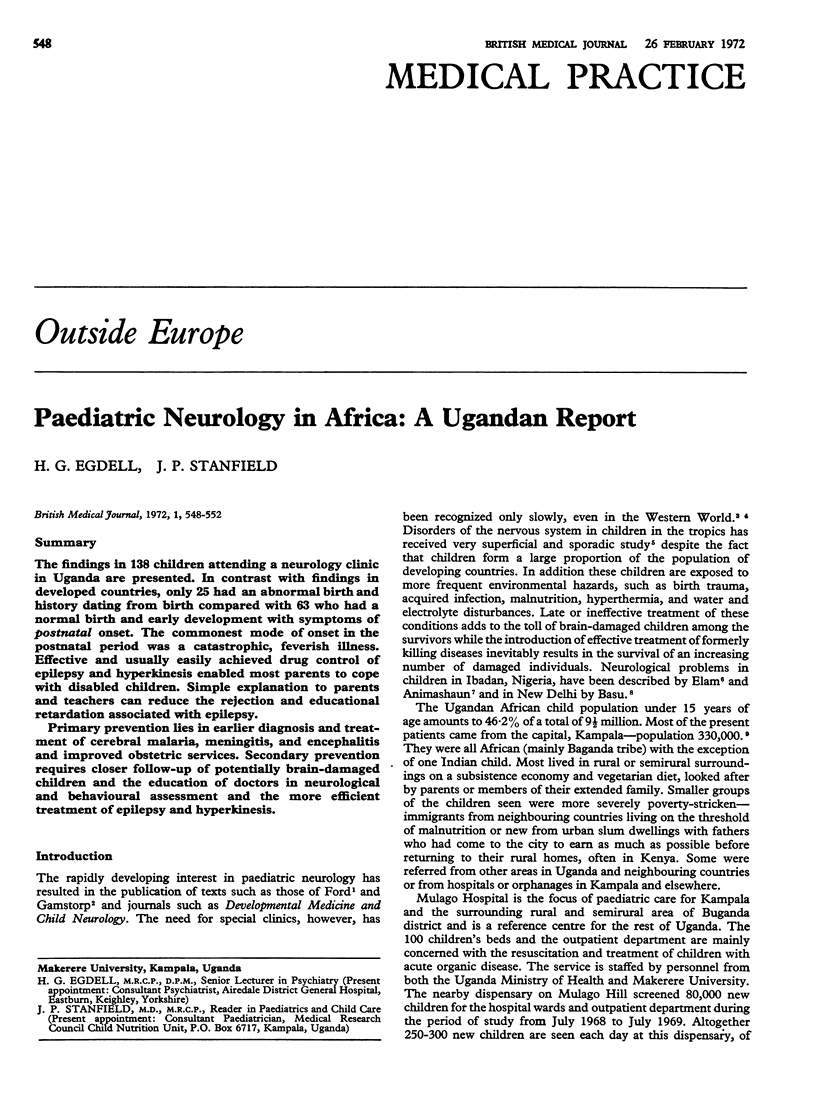
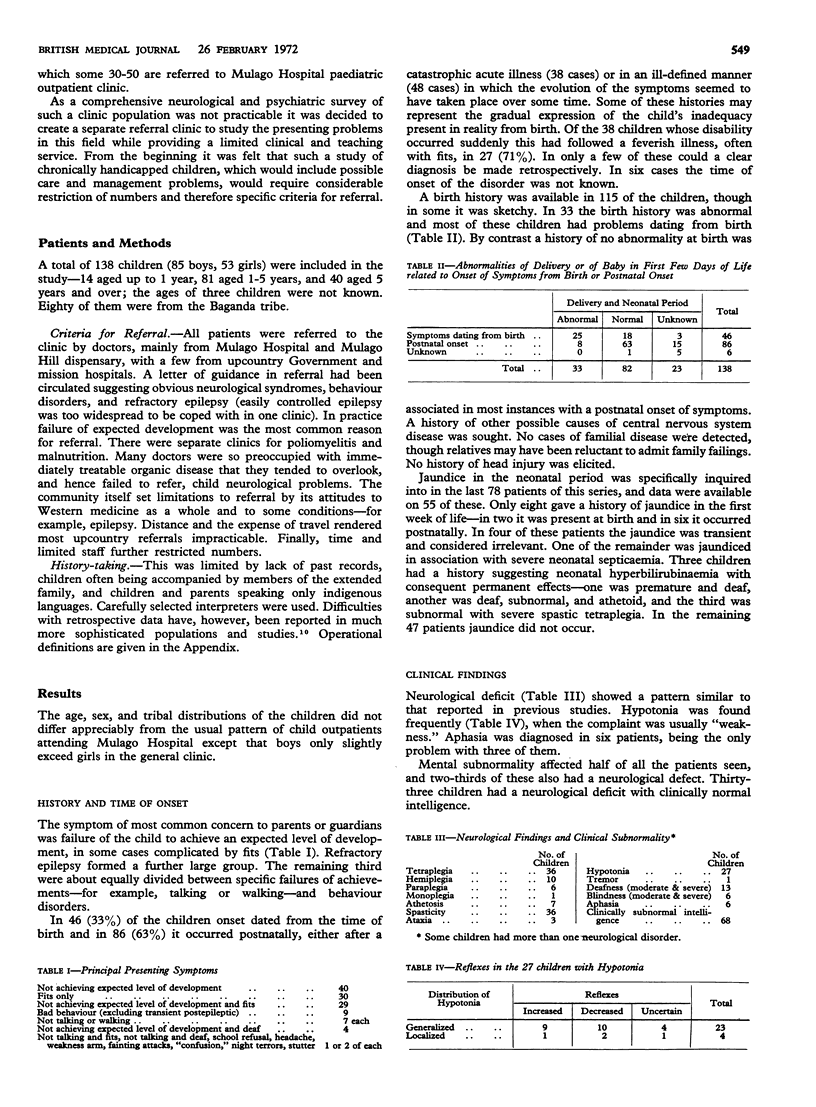
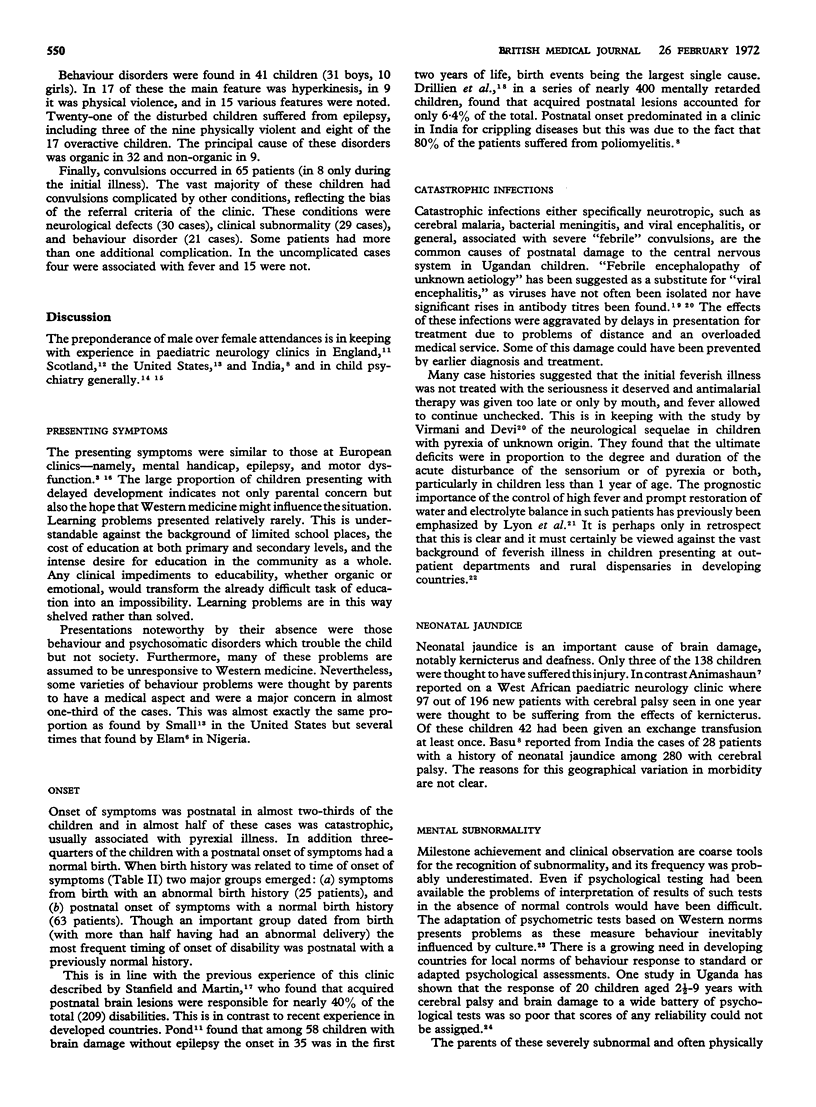
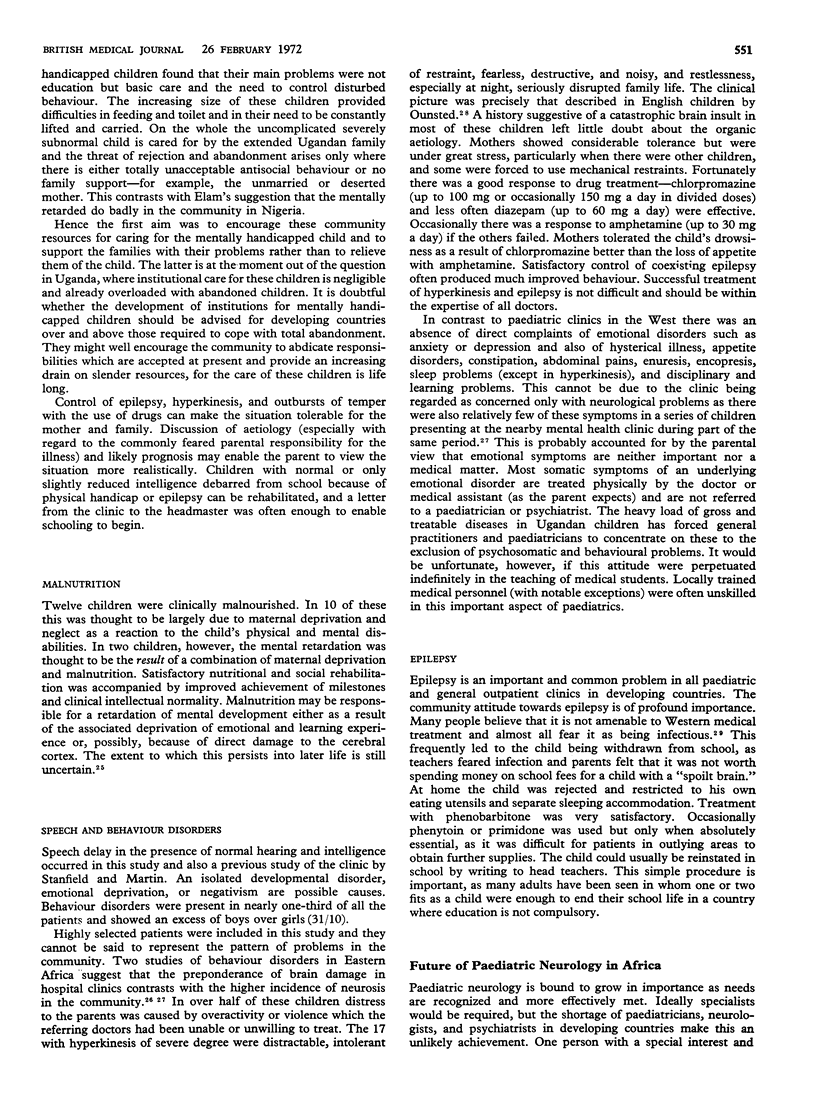
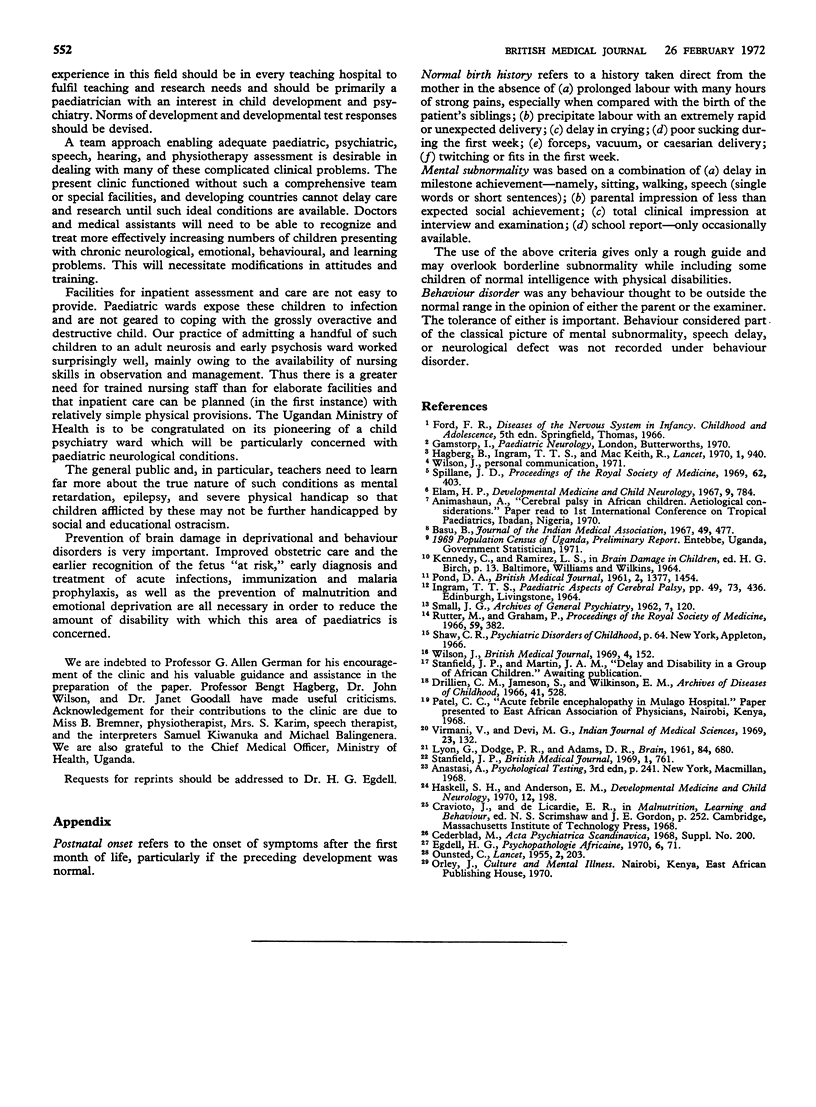
Selected References
These references are in PubMed. This may not be the complete list of references from this article.
- Drillien C. M., Jameson S., Wilkinson E. M. Studies in mental handicap. I. Prevalence and distribution by clinical type and severity of defect. Arch Dis Child. 1966 Oct;41(219):528–538. doi: 10.1136/adc.41.219.528. [DOI] [PMC free article] [PubMed] [Google Scholar]
- Hagberg B., Ingram T. T., Mac Keith R. Development of paediatric neurology. Lancet. 1970 May 2;1(7653):940–942. doi: 10.1016/s0140-6736(70)91060-3. [DOI] [PubMed] [Google Scholar]
- Haskell S. H., Anderson E. M. Some aspects of the psychological assessment of young cerebral-palsied and brain-damaged children in Uganda. Dev Med Child Neurol. 1970 Apr;12(2):198–201. doi: 10.1111/j.1469-8749.1970.tb01889.x. [DOI] [PubMed] [Google Scholar]
- LYON G., DODGE P. R., ADAMS R. D. The acute encephalopathies of obscure origin in infants and children. Brain. 1961 Dec;84:680–708. doi: 10.1093/brain/84.4.680. [DOI] [PubMed] [Google Scholar]
- POND D. A. Psychiatric aspects of epileptic and brain-damaged children. Br Med J. 1961 Dec 2;2(5265):1454–1459. doi: 10.1136/bmj.2.5265.1454. [DOI] [PMC free article] [PubMed] [Google Scholar]
- Rutter M., Graham P. Psychiatric disorder in 10- and 11-year-old children. Proc R Soc Med. 1966 Apr;59(4):382–387. [PMC free article] [PubMed] [Google Scholar]
- SMALL J. G. A psychiatric survey of brain-injured children. Arch Gen Psychiatry. 1962 Aug;7:120–124. doi: 10.1001/archpsyc.1962.01720020044007. [DOI] [PubMed] [Google Scholar]
- Spillane J. D. Tropical neurology. Proc R Soc Med. 1969 Apr;62(4):403–410. [PMC free article] [PubMed] [Google Scholar]
- Stanfield J. P. Fever in children in the tropics. Br Med J. 1969 Mar 22;1(5646):761–765. doi: 10.1136/bmj.1.5646.761. [DOI] [PMC free article] [PubMed] [Google Scholar]
- Virmani V., Devi M. G. Neurological sequelae of pyrexial illness of unknown etiology. Indian J Med Sci. 1969 Mar;23(3):132–136. [PubMed] [Google Scholar]
- Wilson J. Chronic paediatric neurological disorders. I. Br Med J. 1969 Oct 18;4(5676):152–154. doi: 10.1136/bmj.4.5676.152. [DOI] [PMC free article] [PubMed] [Google Scholar]


